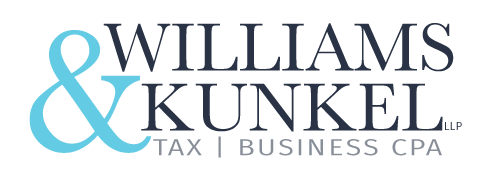Not every tax strategy will apply to your situation or yield benefits that justify the time, risk, or cost. To avoid any unintended consequences, develop your planning strategy with your tax and financial advisor or CPA. By keeping the focus on your entire situation and goals, work to prevent the tax-tail from wagging the dog. (DFW Accountant Advice: Reduce Your Taxes Owed )
Reduce your taxable income by donating appreciated securities
If you have significantly appreciated long-term assets in a taxable account, consider the benefits of donating the securities to charity. When you donate securities to your donor-advised fund, you receive an immediate charitable deduction. Donations exceeding this limit are extendable up to five years. By donating the security, you won’t have to pay capital gains tax on the appreciation.
Donor-advised funds are relatively easily to set up. Though you can receive a tax deduction the year you make an irrevocable gift, you don’t need to donate the proceeds immediately. You control the timing and recipient of the proceeds, if the IRS vouches for the charity.
When you donate a security to your donor-advised fund, that’s it. You can donate different types of assets. Publicly traded stocks, bonds, and mutual funds, to real estate, vested stock options, or even shares in a closely-held business.
From a tax planning standpoint, you’ll want to work with your CPA or tax advisor to see what’s best.
Think about harvesting losses
If you’ve realized large taxable gains this year from stock options, selling a company, or other appreciated assets, consider the pros and cons of tax-loss harvesting, or selling a security to ‘realize’ the loss for tax purposes.
Investors can use losses to offset taxable capital gains. They can also potentially reduce ordinary income by up to $3,000 in the current year. The remaining loss (if any) is available for use in future years.
Before tax-loss harvesting can be a good strategy, calculate your estimated capital gains and losses for the year. To do this, start by netting capital gains and losses of the same holding period. Long-term gains offset with losses and short-term losses reduce short-term gains. In general, long-term assets are held for over one year and short-term assets are owned for a year or less. There are exceptions though, so consult your CPA or tax advisor.
If the netted short and long-term totals include both a gain and a loss, they are netted once more.
After the netting process, if investors still have significant realized capital gains, they can consider tax-loss harvesting to offset their taxable gain by selling assets with unrealized capital losses.
Generally, tax-loss harvesting is most advantageous in specific situations, such as when an investor is looking to make changes to their asset allocation, rebalance, or diversify out of a concentrated stock position. Also, because short-term capital gains are taxed at higher regular income rates, this strategy is typically most effective when focused on minimizing this type of gain.
For investors who are content with their holdings, tax-loss harvesting may not fit in. Wash-sale rules prevent investors from taking a loss if an identical or substantially identical asset is purchased within 30 days before or after the asset was sold for a loss.
Check your tax withholding
If you’re self-employed, receive substantial bonus or commission income, or experienced a taxable windfall in 2019, you could be hit with an underpayment penalty and big tax bill in April.
You may be able to catch up before year’s end if you have tax payments withheld through a payroll deduction. Those tax payments are always deemed to be timely paid. This enables some individuals to catch up on any previous under-withholding once they have more concrete income estimates. Consider recalculating your withholding using the IRS withholding calculator to see how your tax payments compare to your projected tax due.
Be aware that quarterly tax payments may not help you avoid penalties or a surprise bill. This is true even you increase estimated tax payments during the year. To avoid an underpayment penalty, taxpayers can make quarterly payments of at least 110% of last year’s tax liability. Keep in mind that this doesn’t mean your bill won’t surprise you, it just means you won’t incur a penalty.
If you received a windfall this year, consult your CPA or tax advisor. Do this before spending or investing the proceeds to get a better sense of your overall tax liability for the year.
Max out your 401(k), 403(b), SIMPLE IRA, or other tax-deferred retirement plan
If you’re not already on track to meet the IRS contribution limit for 2019, consider increasing your election while there’s still time.
For employees with 401(k), 403(b), most 457 plans, or the federal government’s Thrift Savings Plan, the contribution limit for 2019 is $19,000. Workers age 50 or older have an additional $6,000 catch-up contribution for these defined contribution plans. Some 403(b) plan participants with at least 15 years of service may also be able to make a special catch-up contribution.
The maximum contribution to a SIMPLE IRA or SIMPLE 401(k) plan is $13,000 this year. It contains a $3,000 catch-up contribution for those over age 50.
Pre-tax contributions to employer-sponsored retirement plans reduce your taxable income for the year. For many taxpayers with W-2 income, making annual contributions to a retirement plan is the best way to pay less.
Business owners: consider giving yourself a bonus
If you’re running your own business, you may want to consider giving yourself a bonus before the end of the year to increase your employer-side retirement funding. Depending on whether you have a SEP IRA or Individual 401(k), contributions may be permitted as employee and/or employer: SEP IRA funding is only at the employer level, but the Solo 401(k) can be a combination of the two.
Your SEP contribution or employer 401(k) profit-sharing or matching contribution can be made as late as the tax filing deadline. Even if your company is taxed as a corporation, your annual contribution will likely be based on your W-2 wages. For 401(k) plans, the maximum funding includes individual contributions but excludes the catch-up contribution for taxpayers age 50 and older.
The funding limits are different for sole proprietors, partnerships, and unincorporated ‘disregarded entities’ for tax purposes. Eligible income must be ‘earned income.’ For pass-through entities, employer contributions must be below 20% of net self-employment income. Before making any changes, consult your CPA.
The clock is ticking—most of the tax-saving strategies available to taxpayers are only available before December 31st. (DFW Accountant Advice: Reduce Your Taxes Owed )
Call Williams & Kunkel CPA today in Flower Mound at 972-446-1040 to have a chat and find out how you can save money on your taxes as a real estate professional.
In addition, you can connect with us to receive updates throughout the business week by following us on Twitter or LinkedIn or liking us on Facebook.
Source: Forbes

